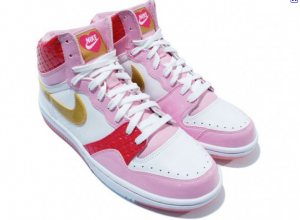Marketing to Women: Not a Niche

Women Are Not a Niche Market
When will marketers finally get it? Recently I was speaking to a professional group and was introduced as a specialist in the marketing to women “niche.” I almost choked. Once again, my specialty has been referred to as niche. Really?
Women influence 85 percent of all consumer purchases, and represent over $7 trillion in purchasing power. This is a niche market?
Yes, our team has managed public relations and marketing programs for food and baby products, but we’ve also represented men’s grooming products, motorcycle and automotive manufacturers, fast food, an airline, a real estate firm, gaming, and a major university. Why? Because eventually it all comes back to women. Women who, yes, are often moms – but who frequently have responsibility for making major business decisions as well. Like buying computer servers. And health insurance. And financial services.
According to Tom Peters, one of the world’s top marketing gurus, women are the top marketing opportunity for the foreseeable future.
Women Hold Purchasing Power
For years, women have been recognized as the chief purchasing officers for their households, and they still are the primary decision makers for household goods. But women also drive the big-ticket expenditures for themselves, their families, and their businesses. For example, women drive the purchases of:
- 91 percent of new homes
- 66 percent of computers
- 92 percent of vacations
- 65 percent of new cars
- 89 percent of bank accounts
- 93 percent of food
All this influence at the same time that 91 percent of these women feel that advertisers don’t understand them.
- 59 percent of women feel misunderstood by food marketers
- 66 percent feel misunderstood by healthcare marketers
- 74 percent feel misunderstood by investment marketers
- 84 percent feel misunderstood by investment marketers
Source: Yankelovich Monitor
The Key to Marketing to Women
It’s a scientific truth that women and men see things differently – because their brains work differently. While men think in abstract principles and have great spatial acuity, women are more accessible emotionally and think more holistically. Translating that into a brand’s marketing messages is critical in reaching this key consumer.
Does your brand truly “get” women and how they relate to your marketing messages?







 Today was a significant day for me – I became the mom of a teenager. In honor of my new status, I thought I’d share the following article on teen myths that every marketer can learn from.
Today was a significant day for me – I became the mom of a teenager. In honor of my new status, I thought I’d share the following article on teen myths that every marketer can learn from.
 I could say my life is full –– but that’s code for frenetically, overwhelmingly busy. Too busy to take care of me –– too busy to be healthy. It’s not that I don’t know what I need to do –– it’s finding the time to do it that’s the problem.
I could say my life is full –– but that’s code for frenetically, overwhelmingly busy. Too busy to take care of me –– too busy to be healthy. It’s not that I don’t know what I need to do –– it’s finding the time to do it that’s the problem.